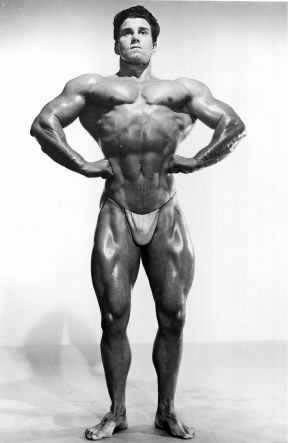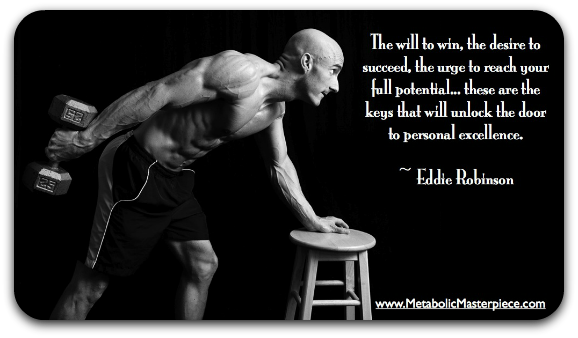I’m a hardgainer.
I’m also a natural lightweight bodybuilder.
As such, I know that there’s only one thing more frustrating than slow muscle gains – seeing hyped up headlines about blasting through your genetic potential while packing on insane amounts of muscle in a short period of time.
The muscle-building industry has a way of making hardgainers feel inferior, especially us lightweight natural bodybuilders. It’s their business to create insecurities about our scale weight so they can prey on us.
It’s a VERY competitive market and they want to sell product. Whether it’s a new secret supplement formula or a workout dvd from a top pro bodybuilder, they need to come up with bigger and bolder promises, putting sales before the truth.
This sets us natural bodybuilders up for nothing but disappointment.
So what’s a hardgainer to do?
How do we overcome these lies and deceit?
With the truth, of course!
How To Determine If You Are, In Fact, a Hardgainer
Subjectivity
The label of “hardgainer” is subjective. In fact, anyone struggling to gain muscle mass could call themselves a hardgainer.
This leads to a couple of problems:
- Your definition of “struggling” and mine could be drastically different. I’ve seen 200+ pound BEASTS call themselves hardgainers because they didn’t gain 10 pounds of muscle in a month.
- Some people don’t struggle to gain muscle because they’re hardgainers, but because their workout, nutrition and effort suck.
Body Type (Somatotype)
Most people associate the ectomorph physique with hardgainer status, and rightfully so.

It can be a real struggle for ectomorphs to gain body weight, let alone muscle mass. Image courtesy of the fit indian.
It can be a real struggle for ectomorphs to gain body weight, let alone muscle mass. They can stuff their faces day in and day out with minimal changes on the scale.
On the bright side, most of their gains will come in the form of muscle mass. Even if they do gain a tiny bit of fat, they can burn it off with barely any effort at all.
Although I was a scrawny kid who could eat a tub of ice cream every day without getting fat, I wouldn’t label myself as an ectomorph. My body was mostly a result of my INSANELY active lifestyle. But when I hit my mid-20’s and became less active, I packed on fat with the greatest of ease.
Hardgainers don’t necessarily have a hard time gaining fat – gaining muscle is their challenge. There is much more to being a hardgainer than your somatotype.
Bone Structure
For more than half a century, bodybuilding books have used bone structure to help predict your muscular potential.
The first one I read was Steve Reeves’ Building The Classic Physique The Natural Way.
Shortly after, I read Stuart McRobert’s book Brawn, which included John McCallum’s ideal physique measurements.
Most recently I read Casey Butt’s book Your Muscular Potential: How To Predict Your Maximum Muscular Bodyweight and Measurements.
Casey uses both wrist and ankle circumference in comparison to your height to help predict your muscular potential and to determine if you are a hardgainer.

Casey uses both wrist and ankle circumference in comparison to your height to help predict your muscular potential and to determine if you are a hardgainer. Image courtesy of Ton Fly USA.
Here are Casey’s hardgainer definitions:
wrist ≤ 0.1045 x height
ankle ≤ 0.1296 x height
Sha-BAM! Confirmation that I’m a small-boned hardgainer. My wrists and ankles both measured below average.
Steve Reeves used wrist, ankle, pelvis and knee circumference to help predict the muscular potential of your chest, arms, waist, thighs and calves.
Steve Reeves’ Classic Physique Proportions
Arm size = 252% of wrist size
Calf size = 192% of ankle size
Neck Size = 79% of head size
Chest Size = 148% of pelvis size
Waist size = 86% of pelvis size
Thigh size = 175% of knee size
John McCallum used chest circumference (obtained from wrist circumference), to predict your muscular potential.
John McCallum’s Realistic Proportions For Hardgainers
6.5 x wrist circumfrence gives chest girth
85% of the chest girth produces the hips
70% of the chest gives the waist
53% of the chest gives the thigh girth
37% of the chest gives the size of the neck
36% of the chest produces the upper arm girth
34% of the chest gives the calves
29% of the chest measurement produces forearm girth

Steve Reeves used wrist, ankle, pelvis and knee circumference to help predict the muscular potential of your chest, arms, waist, thighs and calves. Image courtesy of bodybuilding.com
Casey Butt did a fantastic job of rewriting John McCallum’s formula in a more convenient format:
Chest = 6.5 x wrist circumference
Biceps = 2.340 x wrist circumference
Forearms = 1.885 x wrist circumference
Neck = 2.405 x wrist circumference
Thighs = 3.445 x wrist circumference
Calves = 2.21 x wrist circumference
Waist = 4.55 x wrist circumference
Casey also derived his own formula based on wrist (W) and ankle (A) circumference.
Casey Butt’s Hardgainer Muscular Measurements
Chest = 3.15W + 2.54A
Biceps = 2.28W
Forearms = 1.83W
Neck = 2.30W
Thighs = 2.65A
Calves = 1.80A
I’m 5′ 6.5″ tall. My wrist circumference is 6.75″ and my ankle circumference is 8.1″.
According to Casey’s formula, here’s the breakdown of my muscular potential by body part.
My Potential at 10% body fat:
Chest = 41.7″
Shoulder width = 19.3″
Biceps = 15.3″
Forearms = 12.2″
Neck = 15.2″
Thighs = 21.7″
Calves = 14.3″
My Current Measurements at approximately 10% body fat (need to confirm via DEXA):
Chest = 38″
Shoulder width = 20″
Biceps = 15.5″
Forearms = 12.1″
Neck = 15″
Thighs = 21.2″
Calves = 14.1″
Size Of Muscle Belly
In addition to bone structure, the size of your muscle bellies can provide a good indicator of your hardgainer status.

We’re all unique and we all face our own personal struggles. Image courtesy of pwnfitness.
If you compare my current measurements to my potential, you’ll see that my biceps exceed Casey’s predictions. But if you check out my personal anatomy, you’ll see that I have long bicep muscle bellies.
You’ll also notice that my shoulders exceed Casey’s hardgainer predictions. Although I have slabbed some serious muscle on my delts, I have received great assistance from long clavicle bones.
I may have been genetically cursed with small bones, but I have been blessed in some areas (and no, I’m not talking about that!).
Every hardgainer has at least one strong body part, just like every genetic freak has at least one weak body part. We’re all unique and we all face our own personal struggles.
My chest is by far my weakest body part. According to Casey’s formula, I have to add 3″ of muscle to my chest to achieve my muscular potential. This is obvious in all my photo shoots. Even the judging report from my most recent natural bodybuilding contest pointed it out as the body part I need to improve upon.
Funny, it used to be my thighs and calves that I needed to bring up to par with the rest of my body. I spent a great deal of time bringing them up, but it appears my chest has suffered in the process.
In addition to providing formulas to predict your muscular potential, Steve Reeves also provided natural bodybuilders with a weight chart based on your height:
5’5″ = 160 lbs
5’6″ = 165 lbs
5’7″ = 170 lbs
5’8″ = 175 lbs
5’9″ = 180 lbs
5’10” = 185 lbs
5’11” = 190 lbs
6’0″ = 200 lbs
6’1″ = 210 lbs
6’2″ = 220 lbs
6’3″ = 230 lbs
6’4″ = 240 lbs
6’5″ = 250 lbs
According to Steve, my ideal weight would be around 165 lbs.
According to Casey Butt’s formula, my bodyweight as a hardgainer at 10% body fat would be 164 lbs.
My current weight at approximately 10% body fat is 153 lbs. So that gives me approximately 11 to 12 lbs of muscle to gain before I hit my potential.
What I Love About These Measurements
They provide me with a challenge.

Based on Casey’s formula, I know exactly where that 11 to 12 lbs of muscle is going to pack onto my frame. Image courtesy of metabolic masterpiece.
Gaining 11 to 12 lbs of muscle is no easy feat for a 38-year-old gym veteran. But it’s also a realistic expectation. Based on Casey’s formula, I know exactly where that 11 to 12 lbs of muscle is going to pack onto my frame.
The sad thing is, even when I reach my potential and gain that muscle (which will look visually impressive on my frame), I’ll still get ridiculed and my authority will still be questioned because I only weigh a buck sixty-five. I find that pretty ridiculous. It’s definitely something that needs to change in our industry.
Lightweight natural bodybuilders are under-represented in our industry. It’s something I want to change. I’m passionate about giving ‘smaller’ guys like me a voice, encouraging them to take pride in their size.
After all, small-boned guys tend to have the most aesthetic physiques and we often appear to weigh much more than what the scale says.
So, if you’re a lightweight natural bodybuilder like me, stand tall, make the most out of what you’ve got and rise to the occasion. Everyone loves the underdog!
Once again, I hope you have found great value in this article. If you enjoy this topic, I highly recommend you find yourself a copy of Steve Reeves’, Stuart McRobert’s, and Casey Butt’s books.
You can find Casey Butt’s book can in pdf format here:
Your Muscular Potential How To Predict Your Maximum Muscular Bodyweight and Measurements.
(I am not affiliated, nor do I receive any type of compensation for this referral.)
NOTE: These measurements are geared toward men, as I have yet to come across similar formulas for females. I would guess this is because the concept of women gaining muscle has been somewhat taboo until recent years.
Sculpt a Masterpiece,
Scott Tousignant
About the Author
 Scott Tousignant, BHK is a Physique Coach and Elite Natural Bodybuilder with the UFE. Scott specializes in helping regular men and women sculpt their body into a chiseled work of art.
Scott Tousignant, BHK is a Physique Coach and Elite Natural Bodybuilder with the UFE. Scott specializes in helping regular men and women sculpt their body into a chiseled work of art.


